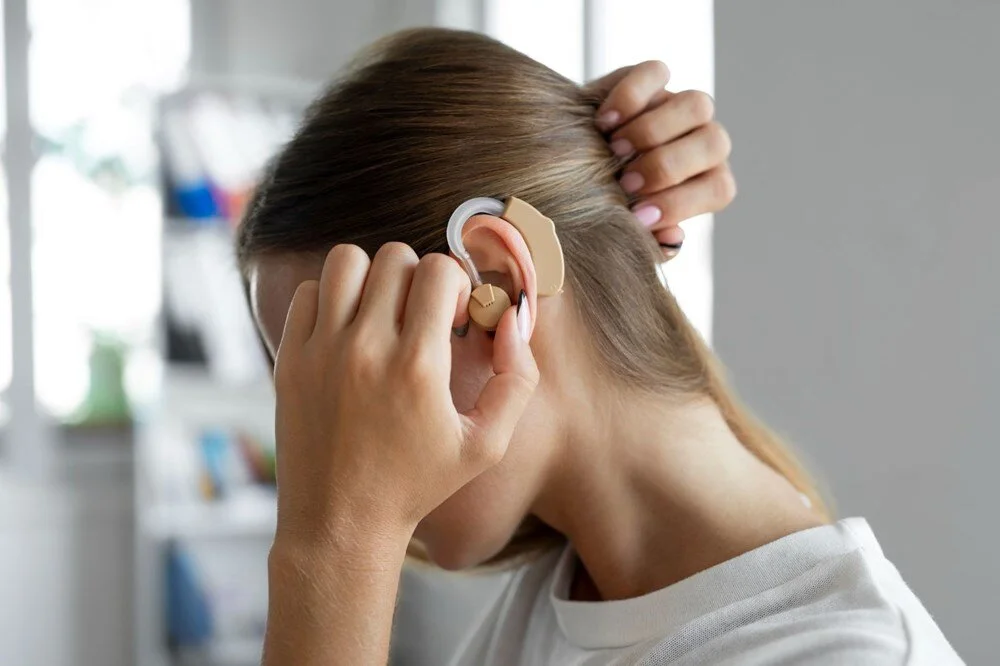Understanding Hearing Loss
Hearing loss is a complex auditory condition that affects millions of individuals globally. There are three primary classifications of hearing loss: sensorineural, conductive, and mixed. Sensorineural hearing loss occurs when there is damage to the inner ear or the auditory nerve. This type is often permanent and can be caused by factors such as aging, exposure to loud noises, or illnesses. On the other hand, conductive hearing loss arises when sound waves are hindered from reaching the inner ear. Common causes include earwax buildup, fluid in the middle ear, or structural issues. Mixed hearing loss combines features of both sensorineural and conductive types, often complicating the diagnosis and treatment.
The prevalence of hearing loss is significant; the World Health Organization estimates that over 466 million people worldwide experience disabling hearing loss, with projections suggesting that this figure could reach 900 million by 2050. This statistic underscores the critical need for early detection and awareness regarding hearing impairments. Hearing loss can severely impact an individual’s ability to communicate effectively, leading to misunderstandings and social withdrawal. Additionally, it can strain relationships with family and friends, as frustration mounts both for the person experiencing hearing loss and those attempting to communicate with them.
Moreover, untreated hearing loss has been linked to a decline in overall quality of life, including feelings of loneliness and depression. As such, it is imperative to recognize the signs of hearing loss, which may include difficulty in following conversations, particularly in noisy environments, or frequently asking others to repeat themselves. Awareness and proactive measures must be taken to seek evaluation and appropriate intervention, which may include hearing aids or assistive listening devices. Understanding the nuances of hearing loss is essential for fostering better communication and ensuring that individuals maintain their connections with others.
The Evolution of Hearing Aids
The journey of hearing aids spans several centuries, beginning with rudimentary devices in the 17th century. These early hearing aids were essentially amplifiers, crafted from materials such as wood, horn, and metal. As the understanding of sound and acoustics advanced, so did the design of these devices aimed at assisting individuals with hearing impairments. The 19th century marked a significant milestone with the introduction of the first electronic hearing aids, which began to employ electrical amplification, although they were bulky and cumbersome compared to modern standards.
The mid-20th century saw remarkable strides with the advent of transistor technology. This innovation enabled the development of smaller, more practical hearing aids, making them more accessible to a broader population. User experience also began to improve during this period, as manufacturers focused on enhancing sound clarity while reducing background noise interference. The transition from analog to digital technology in the early 2000s revolutionized hearing aids further. Digital hearing aids are equipped with advanced signal processing capabilities, allowing for superior sound distinction and quality.
Moreover, today’s hearing aids are significantly more compact and smart, incorporating features that were unimaginable just a few years ago. The integration of Bluetooth technology has allowed users to connect their hearing aids seamlessly with smartphones, televisions, and other electronic devices. This connectivity enables personalized audio experiences, where users can adjust settings via apps tailored specifically for their devices. Furthermore, the inclusion of rechargeable batteries has eliminated the inconvenience of constantly purchasing and replacing traditional batteries. As technology continues to evolve, modern hearing aids serve not just as auditory devices but as sophisticated gadgets enhancing the overall quality of life for those with hearing loss.
Choosing the Right Hearing Aid
Selecting the appropriate hearing aid can significantly improve the quality of life for individuals experiencing hearing loss. This process begins with understanding the type of hearing loss one is facing, which is categorized into three main types: sensorineural, conductive, and mixed hearing loss. Each category may benefit from different styles and technologies in hearing aids. For instance, sensorineural hearing loss, often caused by damage to hair cells in the inner ear, may call for digital hearing aids that can be fine-tuned to meet specific hearing needs.
Another crucial factor to consider is lifestyle. An active individual may require a hearing aid that is durable, water-resistant, and equipped with features such as noise cancellation to help in noisy environments. Conversely, someone with a more sedentary lifestyle might prioritize comfort and ease of use. Budget also plays a significant role in the selection process. Hearing aids range widely in price, affected by factors such as technology, brand, and additional features, such as Bluetooth capabilities for streaming audio directly from devices.
Personal preferences should not be overlooked; potential users should reflect on aesthetics, comfort, and ease of adjustment. It is advisable to consult with an audiologist, who can offer tailored guidance based on a comprehensive hearing assessment. They can recommend specific models that suit the individual’s hearing profile and discuss the latest advancements in hearing aid technology.
Trying different hearing aid models is essential, as it allows users to assess comfort levels and functionality firsthand. Features like feedback suppression can enhance user experience by minimizing whistling sounds, while rechargeable batteries offer convenience for daily use. Each user’s combination of hearing loss type, lifestyle demands, and personal preferences will ultimately dictate the best choice of hearing aid, ensuring a return to clearer, more vibrant sounds.
Living Life Fully with Hearing Aids
Hearing aids today serve as transformative tools, allowing individuals to engage more fully with their surroundings and reclaim cherished connections with family and friends. Numerous testimonials from satisfied users illustrate the profound impact these devices have on personal and social well-being. Many people report that upon obtaining hearing aids, they experience an immediate enhancement in their daily lives. They share stories of once-isolated family gatherings being revitalized, as they can hear conversations clearly and actively participate in discussions.
These personal accounts highlight an essential truth: hearing aids are far more than mere amplifiers of sound. They represent a pathway to reconnection. For instance, one user recounts how their hearing aids allowed them to communicate better with their grandchildren during family outings, reestablishing a bond that had faded due to difficulty hearing. Another user, who had withdrawn from social events, credits their newfound ability to hear as the catalyst for reconnecting with long-time friends, helping to restore a sense of belonging and joy in their life. Hearing aids have allowed many to embrace recreational activities they once shied away from, such as attending concerts or joining clubs, where interaction and communication are key components of enjoyment.
Moreover, several studies indicate that individuals who use hearing aids experience noticeable improvements in overall mental health, often leading to reduced feelings of loneliness and isolation. The ability to hear and engage with the world enhances not only communication but also fosters emotional connections, reinforcing relationships with loved ones. By welcoming hearing aids into their lives, individuals are empowered to overcome the barriers posed by hearing loss, enabling them to fully participate in conversations, events, and daily life. Hence, utilizing hearing aids can be a pivotal step toward a more vibrant, fulfilling existence.






